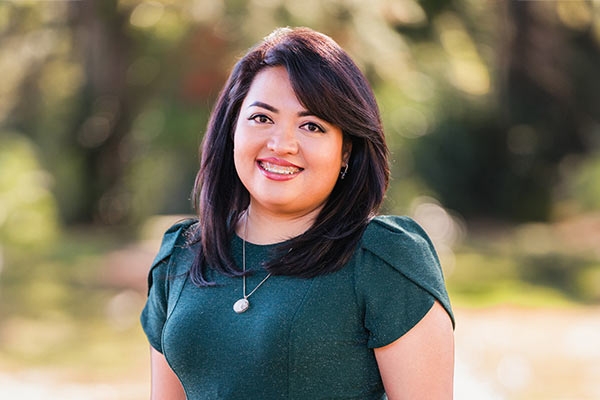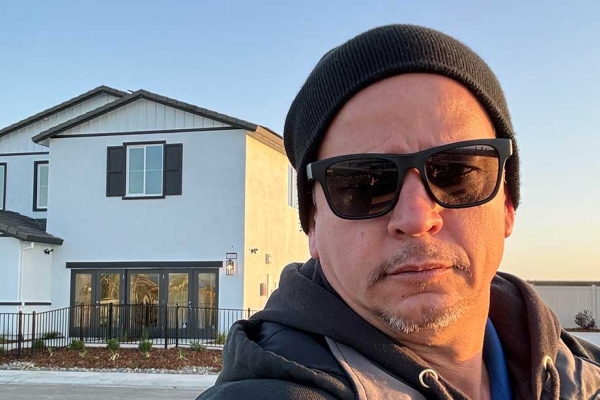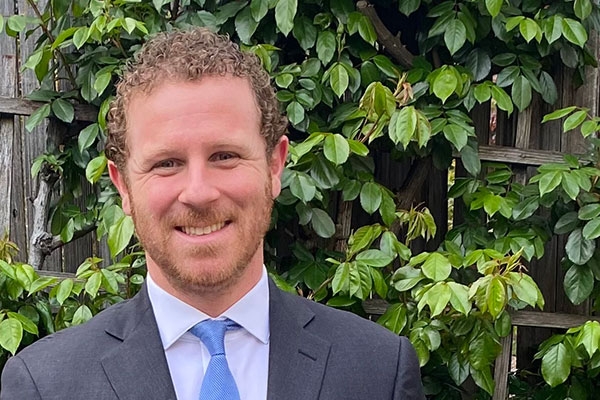Like many of us, Jessica Raab Holmgren didn’t know what she wanted to do for a living after high school. Growing up on a sailboat in a marina in Everett, Wash., gave Jessica a unique background and skill set that led to a great high school job in retail with West Marine, but it wasn’t her career path.
With so many unknowns, she chose to earn an associate’s degree in arts and sciences from Everett Community College first.
“I am a first-generation college student,” Jessica says, “and the community college route was a good way to get the basics out of the way before transferring to a four-year.”
Two years later and wanting a change, Jessica returned to her family roots in Colorado. Ready to earn her bachelor’s degree, she transferred her community college credits to the Rocky Mountain College of Art + Design and earned a degree in interior design.
“I am a creative person by nature, doing crafts, art, quilting,” she says. “I like the process of brainstorming.”
Jessica got her design start as a production designer for the Starbucks Coffee Company—more commonly known as Starbucks®—back in the greater Seattle area.
“It was a very lucky break to get a design job at Starbucks,” she states. “It is highly competitive and a great place to work and start a design career. I was producing a couple of hundred stores a year.”
Jessica prepared interior store designs, produced design-intent drawings and grocery kiosk store design documents, evaluated project scope through the review of architectural surveys during the design process, collaborated with signage vendors and more. Some of these project tasks were peripheral to the facilities where the in-store kiosks were located.
“At the time, I had no idea that facilities management was a thing,” says this now Certificate Program in Facilities Management graduate, who would one day have a successful career on the business side of managing facilities projects.
Production Design Leads to Project Management
Two years later, Jessica was promoted to senior production designer for Seattle’s Best Coffee®, a subsidiary brand of Starbucks. During the next five years, she managed the design processes and the outsource production of design intent and construction drawings; reviewed vendor quotes, bids and shop drawings for adherence to budget and design intent; and created innovative time- and space-saving solutions with operations and equipment vendors to optimize production, among other projects.
It was during this time that Jessica’s interior design background began mixing more and more with various project management aspects related to the stores’ physical locations.
“Seattle's Best operated as a startup at the time,” she tells me. “I had more freedom and responsibility to design and project-manage my stores. I was able to create store-design brand concepts and work with franchisees to create stores.”
As Jessica managed more stores to project completion from a design perspective, her business skill set grew. She also began to recognize the importance of project management in her career.
“I think project management is in everything we do at work,” Jessica says. “It might not involve a strict Gantt chart or a huge budget, but you still have to organize your tasks to get work done. In my case, each store design I did, I had to manage to completion, ensuring the design met brand standards and with quality execution.”
Jessica also saw how her work as a production designer intermingled with facilities operations to install her design using a project management process.
“I did a few major operational roll-outs on the Starbucks side for Mobile Order and Pay, the new drive-thru experience and a reimagined cold beverage station,” she recalls. “These all had a small connection to the people who were managing the facilities themselves—espresso machines, ice machines or anything else having to do with store operations. Starbucks leases their spaces so anything else building-related is managed by a separate entity.”
Jessica’s career path began to shift.
“I was still at Starbucks but in a project management role,” she says. “I had several programs that I oversaw from a store development and implementation perspective. I wasn't doing any design at the time, but I was involved with contractors and owner representative companies like JLL.
“This was being a direct liaison with licensees in grocery, and I managed their projects with a development manager who was boots-on-the-ground while the store was being built. I had a pool of designers who were doing the production—like how I had started out. I managed their work, but not them, from a personnel perspective.”
Making the Career Switch to Facilities Management
With her growing knowledge of project management as it related to facility design, Jessica pivoted to a different industry in 2018. She joined the Snohomish County Public Utilities District (PUD) as a project manager.
Jessica’s original career path in interior design had moved in a business-centered direction. But despite the crossover with her skills and professional background, the leap to a new field and industry brought her out of her comfort zone.
“Facilities management is a big departure from where my career had taken me thus far. I found it interesting but scary,” she says.
When the COVID-19 pandemic hit in 2020, many office buildings and other facilities around the country closed as more people had or chose to work from home. But the county public utility had to keep things running at their building sites.
“Even though people were not in the office, we still had projects to complete to make sure our sites were up to snuff,” she explains. “As a utility, we have staff who never left the office or the field. We are an essential service, which means there are a certain number of facilities that we had to maintain and operate as if COVID wasn't happening.
“I have an office job, and because of the pandemic I had time to take classes to further my education in facilities management—I didn't know a lot about it as far as the details and nuances of the business.”
She discovered a program local to her, but it only offered a set course of study. Instead, Jessica took advantage of the flexibility of our online courses within the Certificate Program in Facilities Management, focusing her studies on the topics that most interested her.
Among them were:
When asked about which course made the biggest impact on her career, Jessica’s answer is not a “which” but a “who”: instructor Jon Martens.
“I had Jon Martens for my facilities core courses, and he is amazing,” she lauds. “His career path was really interesting to me, and he is passionate—very passionate—about facilities management. He treated everyone in our class well and was very interested in us as people and how we could contribute to the industry.
“Jon has a ton of experience and real-world examples. For example, he talked about dealing with management and how hard it can be to get the facilities department the funding and staff it really needs to operate effectively. He also talked about running systems to fail, because the budget was never there to properly plan for replacement projects. These real-world examples helped me to be able to think strategically about the equipment and facilities we have at the PUD by keeping a pulse on their state of repair or the need for a remodel, or even business-case information for a new facility.”
“Now I have a good foundation of knowledge about the industry and how I can make an impact.”
Since beginning the courses—and completing the certificate by late 2022—Jessica has been able to apply her newfound knowledge in her day-to-day work. The curriculum gave her tools to better understand project scoping, budgeting, scheduling, considerations for strategy and more.
“I really enjoyed the strategy and business portions of the Facilities Management: Strategic Planning Leadership and the Organization course,” she says. “I have only been on the project management and department management sides of facilities. How to manage the strategy for project execution and budget was a really big part of what I learned in this course. It equipped me with the skills to know how to prioritize projects, manage department budgets and shift things around when an emergency project or repair comes up. It seems like that game Whac-a-Mole™, but I love it.”
Those enhanced skills led to a promotion.
Jessica credits the facilities management certificate for helping her get to where she is today. Now the manager of facilities planning and engineering with Snohomish County PUD, she is confident that she will excel in this leadership role.
“The PUD is a great place to work,” she says. “I initially didn't think that management was an option due to our small team, but because I had taken the courses when the opportunity came up, I felt I had the skills and knowledge to apply.
“Now I have a good foundation of knowledge about the industry and how I can make an impact. I would love to continue my path in facilities. Every day, something different needs attention. I manage engineers, interior designers, A/V technicians and a business administrator. Every group has a different type of work and I love working with them to provide paths to get their work done.”
All this despite never imagining herself with a career in facilities management. So when it comes to others contemplating a professional program relevant to their current degree or career path, she suggests they “go for it.”
“The time commitment and the knowledge you gain from it will be invaluable,” Jessica affirms. “If you are starting your career in facilities, you will have a leg up on the rest of the applicants, and if you are a seasoned professional, you will still take something away from the certificate.”



